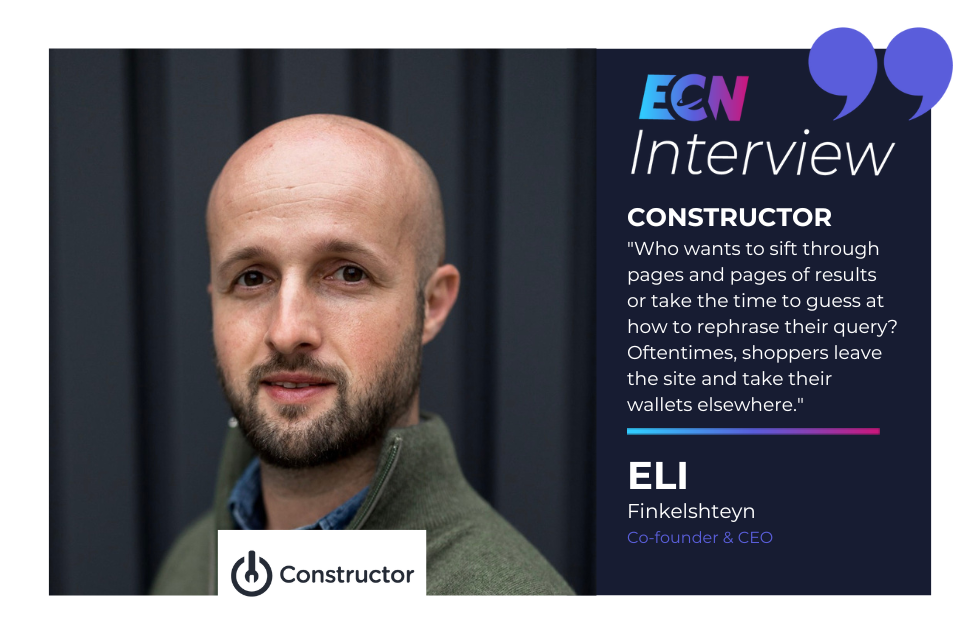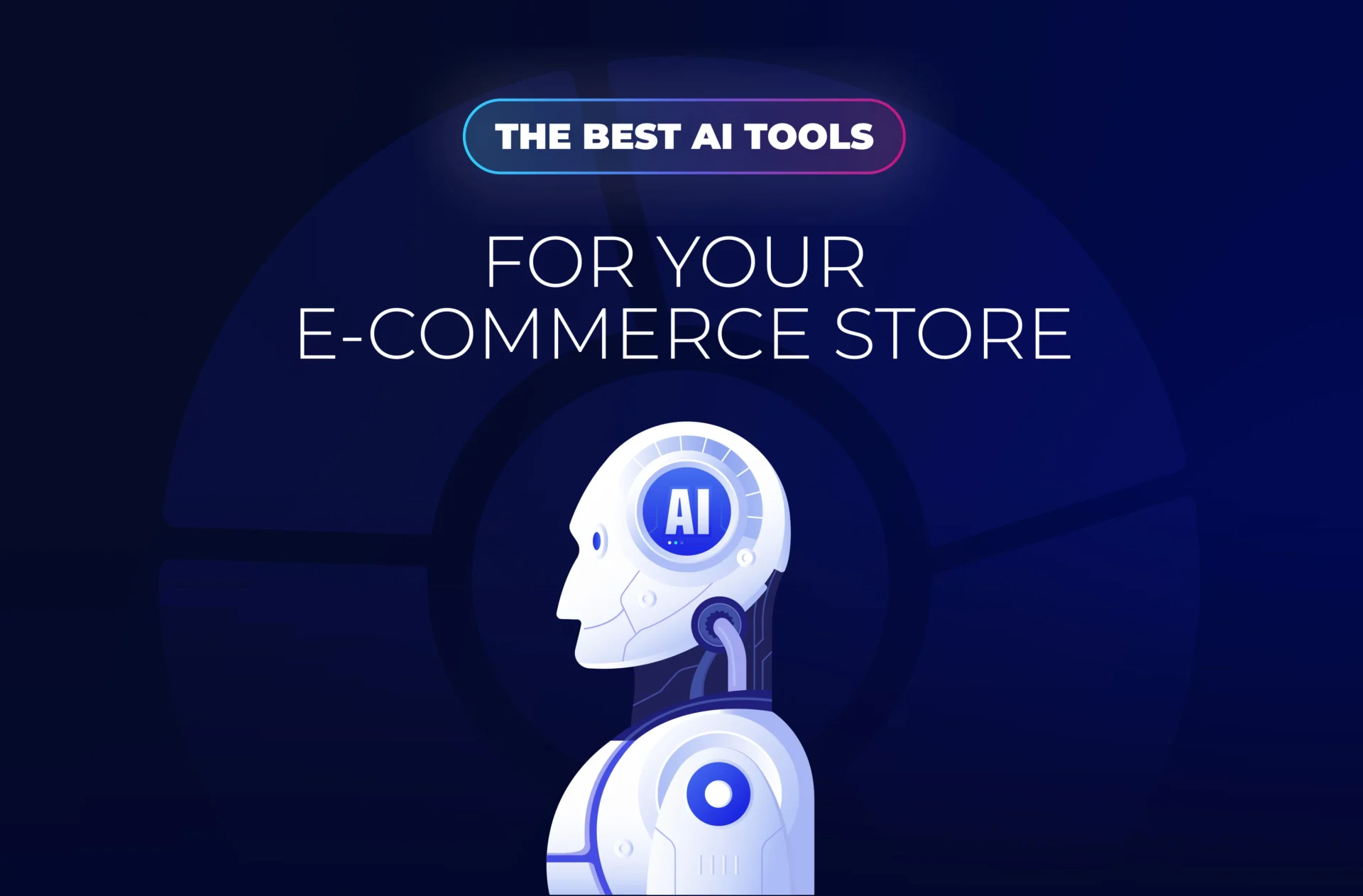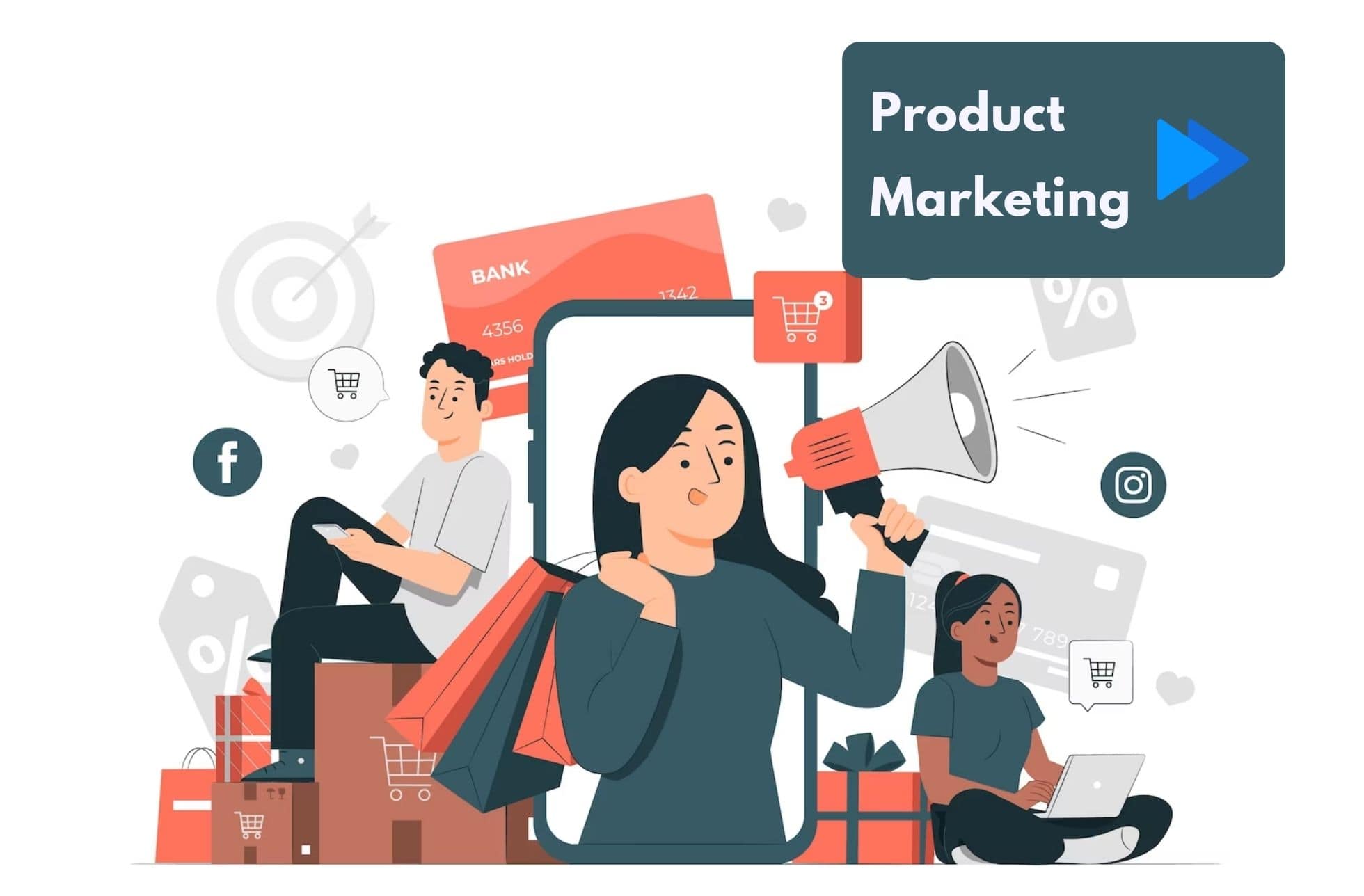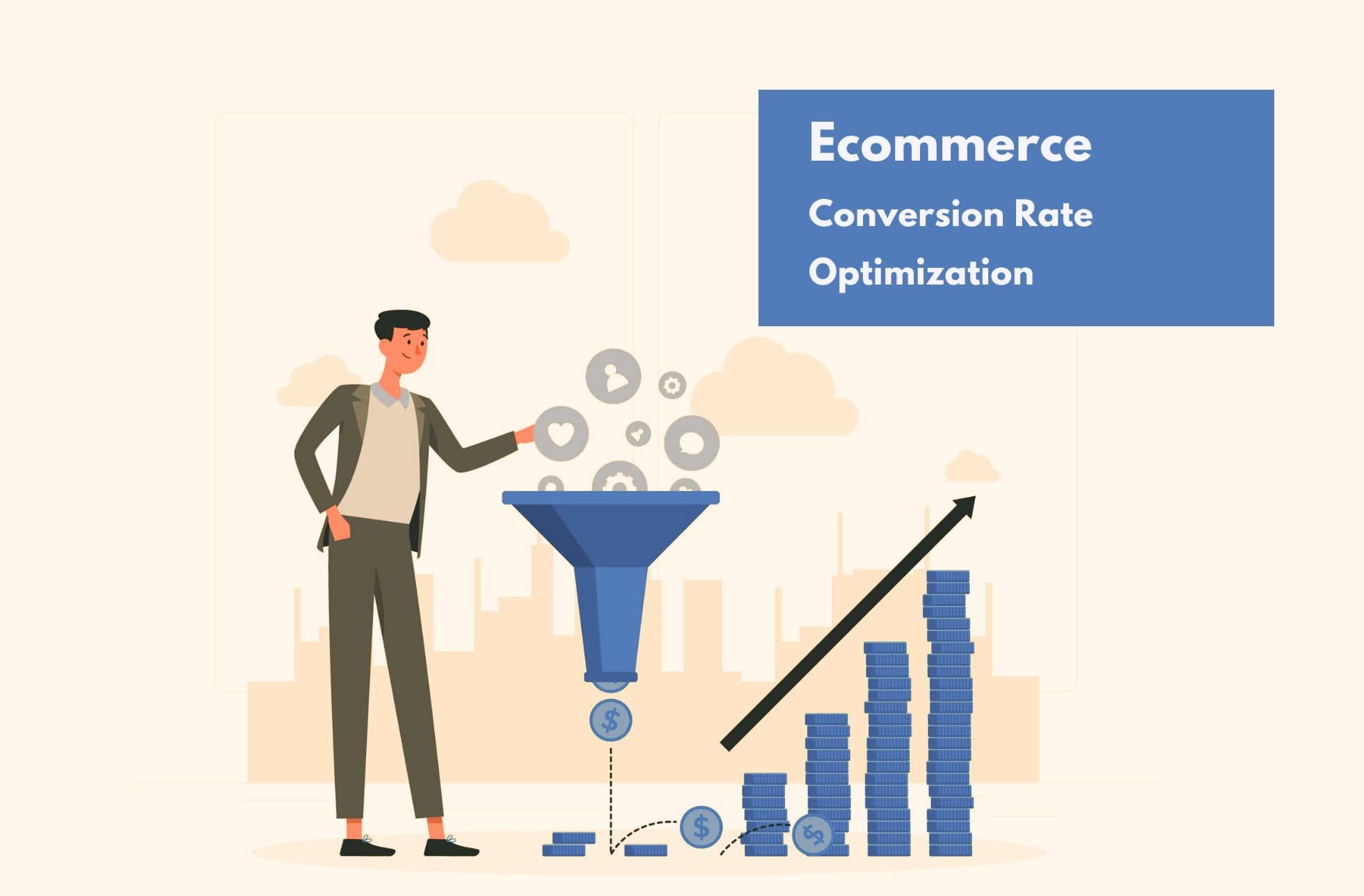I recently had the opportunity to connect with Eli Finkelshteyn, co-founder and CEO of Constructor.
As interest heats up around artificial intelligence (AI) in e-commerce, thanks to the buzz around ChatGPT, it was interesting to speak to Eli about Constructor’s own AI — and how retailers around the world use it to drive personalized, revenue-generating omnichannel experiences.
Please tell me about yourself and your background.
I’m a data scientist at heart; my background is in machine learning, natural language processing (NLP), and linguistics.
I used to work as a search engineer at Shutterstock in its early days, working on their search engine and search algorithms. Seeing how the algorithms I built and collaborated on directly impacted the bottom line was really rewarding, but I felt limited by the underlying open source search technology we used. It wasn’t really built for e-commerce — and that was true for all search and product discovery technology available to e-commerce companies at the time. Simultaneously, my work felt wasteful, because I knew there were people just like me working on the exact same things at just about every other large e-commerce company. It made me want to effect change like what I was doing at Shutterstock on a larger scale, and it made me want to build, from the ground-up, a platform specifically for the kind of conversion optimization that’s important in e-commerce — and to do it well, so no one would ever need to repeat this work again.
The kinds of problems I was working on, and the desire to really solve them in the right way, from the ground up specifically for e-commerce, is what led me to found Constructor.
I found in my career that when trying to create great product search experiences in-house, my team was always resource-constrained, and that’s what drove many of our decisions. We were proud of our results, which did move the needle… but it felt like we were building a kayak when Amazon already had a battleship. And talking to people in the same role at other e-commerce companies, I heard that many felt the same way. A world where one company has a battleship and everyone else has kayaks isn’t great. Having more competition in e-commerce is good for shoppers and retailers alike. So, I founded Constructor to level the playing field: so more retailers can deliver high-impact search and product discovery experiences that are truly attractive to shoppers.
Please tell me more about Constructor too.
Sure. Constructor provides an AI-based platform for product search and discovery. E-commerce companies use us to create highly personalized experiences across channels that also reflect their unique key performance indicators (KPIs): such as optimizing for revenue, conversions, high-margin products and so on.
We drive personalization based on historical and in-the-moment clickstream data from the retailer’s digital channels: looking at what each shopper clicked on, spent the most active time viewing, added to cart, purchased, scrolled right past and didn’t engage with, etc. We can combine this with “Quizzes” data (from brief surveys that retailers give their shoppers) and retailers’ other data streams (such as loyalty program information) to form an even more complete and actionable picture about each shopper.
Our platform continually refines results and experiences, hundreds of millions of times each day — using AI and machine learning to learn from each and every shopper query, and from how they interact with the recommendations and results, in order to serve every shopper with attractive, personalized items that we hope they’ll love.
What kinds of companies do you work with?
We work with large e-commerce companies all over the world, across all sectors of retail. Some of our customers include Sephora, Birkenstock, Target Australia, American Eagle, home24, major grocery chains and more.
What problems do you solve for customers?
We address pain points for retailers and their shoppers alike.
Shoppers today, for instance, often only have a loosely relevant search and product discovery experience. They might search for “shirt” online — and get inundated by pages of results. Yes, the results are shirts, but they’re not really meaningful or attractive to the shopper at hand. Or a grocery shopper might search for “green apples” when they’re looking for Granny Smiths and get green-apple flavored candy and green-apple scented shampoo included in the results back. Other times, a search engine might not recognize a typo or a synonym (like “beanies” for “hats” or “bedside table” for “nightstand”) and give limited or no results.
This results in frustration for the shoppers: Who wants to sift through pages and pages of results or take the time to guess at how to rephrase their query? Oftentimes, shoppers leave the site and take their wallets elsewhere. For retailers, problems like search abandonment, cart abandonment and site abandonment mean money left on the table.
Our platform for search and product discovery addresses this. It takes everything it knows about a shopper and the trending popularity of products in the catalog to find and rank the products that are the best fit for them — across category pages, search results and other product recommendations, including on homepages, product detail pages and so on. So if a shopper searches for shirts, we can return results that highlight shirts in the person’s preferred brands, colors, price points and more. And that shopper searching for “green apples”: Not only will we show Granny Smiths, but if we know that person tends to buy organic, we’ll prioritize organic Granny Smiths as well.
We also use AI, machine learning algorithms and NLP to adjust for typos, detect synonyms, weigh word importance and, most importantly, infer intent. And in addition to giving shoppers highly relevant and attractive results and recommendations, we also map those experiences to retailers’ own KPIs — a win-win for shoppers and brands alike.
How will technology like ChatGPT change the game in e-commerce search and product discovery?
We’re excited with the interest ChatGPT is generating around AI in e-commerce — related to both GPT-specific generative AI and AI in general. The possibilities with ChatGPT we’re most excited about emulate the ability to have an in-depth conversation with an in-store associate: you can explain, in detail, what you want and need, and engage in a back-and-forth dialogue.
That’s currently not something shoppers can do well in most search bars today. People have been trained to phrase their online search terms as succinctly as possible — almost in “caveperson speak” — and eliminate unnecessary words. Sometimes that is all a shopper wants and needs to do. But for the times when typing in a longform or abstract ask is helpful — like: “What ingredients do I need to make a lemon meringue pie?” or “I want to buy something to wear to my friend’s backyard wedding in Southern California in May” — then incorporating ChatGPT into search will be incredibly helpful.
At Constructor, we’re currently experimenting with ways to blend ChatGPT with our own AI so that, for example, not only could someone have their longform search query answered well, but they’d also get back results that are personalized to them. This is something our retail partners are extremely excited about, and we have a beta product ready in this space that some early adopting customers are currently integrating with and testing.
It’s also important to note that ChatGPT doesn’t solve every problem… and it’s not intended to. It works well for a specific set of use cases. But for other areas in e-commerce — like creating cohesive omnichannel experiences or personalizing the “you might also like” recommendations on a website — clickstream-based AI will be a better fit. And in other e-commerce situations, other AI models, or even tools that don’t include AI, will be the best solution.
Amidst all the excitement about ChatGPT — and we’re certainly excited about it too! — there’s a rush among companies to do something, anything, that incorporates the technology. I’d advise taking a step back and making sure that what you do is actually useful. Is it something that will truly benefit the customer and the bottom line, or is it a gimmick that shoppers will try out once or twice, and then go back to the old and easier way? Retailers who integrate ChatGPT into search and product discovery, in a way that offers true utility, will create winning experiences, but it’s not a silver bullet for everything. We all need to make sure we’re building and using technology to best solve shopper needs — not just to feel like we’re on the cutting edge.
Where do you see the future of product search and discovery heading?
We’re seeing three different phenomena come to the fore that will be important now and in the years ahead.
The first has to do with ChatGPT and its underlying technology, transformers. Transformers are what the “T” in ChatGPT stands for, and it’s a technology we’ve been incorporating and leaning on more and more over the last couple of years. The cool thing about transformers is they help you more deeply understand longform text, and their use enables much more freeform and feedback-based online searches. Because when we think about it, search and product discovery haven’t changed much since the 1990s. We still search the way we did when we were kids: typing in keywords, not using full sentences, hoping for the best. It’s not always the best way to search, but it’s been the best way to counter an imperfect system. And thanks to transformers, a sea change is coming… in fact, we’re already in the midst of it.
I also think we’ll see search results displayed in new ways. When you search for items in a brick-and-mortar store, there’s a lot of thought that goes into where items are placed, what goes on mannequins, how clearance items are displayed and so on. But when you search online, results typically come back in a grid, with rows of items spread out across three or so columns. This may not be the best way to present items to a shopper, but it’s often the easiest way to pull information from a database. We’ll see more experimentation here in the future.
And finally, we’ll continue to see a blurring of lines between digital and brick-and-mortar experiences. These had traditionally been separate domains: with different teams, different customer experiences, siloed data, etc. But digital can help out brick-and-mortar and vice versa, with the goal of creating an overall better experience for the customer that’s truly omnichannel and that really understands their needs. So these channels will further merge: with continued “buy online, pick up in-store” options, mobile apps that allow you to locate products in-store, ways to leverage cross-channel data to drive personalization wherever you are, and more.
What e-commerce lessons have companies learned from the pandemic?
They’ve certainly seen the importance of blurring the line between brick-and-mortar and digital to create experiences that are convenient and useful to shoppers. Shoppers don’t tend to recognize — nor should they — that a physical store might be run differently than an online channel. It’s all the same brand, and retailers can make their data and systems work together to create smooth and seamless experiences, from product discovery, to purchases and pick-ups, to even returns.
Retailers have also seen that relevance — and by this, I mean something that’s “technically relevant” as we discussed earlier — isn’t the right way to judge success in product discovery. If someone searches for shirts, and you show them shirts in general, is that a win? For e-commerce companies, showing items that are attractive to the individual shopper and getting them to convert is what really matters.
And finally, in a tight economy and in the face of constant change, retailers are really focusing on what matters to their business. Where they may be reevaluating some initiatives and engagements, we’ve found that good search and product discovery remain extremely important — as a way to increase engagement and revenue, and breed loyalty. We’ve had 100% client retention, along with significant growth, over the past few years as retailers really see the value in driving personalized and revenue-generating experiences.
How are retailers today doing, in general, at crafting omnichannel experiences?
They’re getting much better. I’m happy that it feels like fewer activist investors are trying to rip retailers apart into an e-commerce half and a brick-and-mortar half. That seemed to be all the rage a couple years ago. Everyone is starting to realize now that omnichannel journeys and blurring the line between shoppers’ online and in-store experiences are key to the best shopper experiences of tomorrow. The pandemic accelerated cross-channel strategies, with a lot more “buy online, pick up in-store” functionality appearing across sites, but I still think there’s a lot of room for us all to do more and get better.
Bringing digital in-store, so people can find products without wasting time roaming every aisle or trying in vain to find a knowledgeable store associate, is a real opportunity. I used to work as a store associate at a Walgreens in high school, and no matter how well I thought I had memorized the products we sold, I was always missing something — or having a hard time remembering where it was. Bringing digital technology in-store to help shoppers find what they’re looking for, whether that happens on apps or on in-store kiosks, is an omnichannel improvement that’s overdue.
What are Constructor’s biggest priorities in 2023 and beyond?
Number One for us is always trying to think past the hype — so focusing not on what are the coolest new technologies out there, but on how we can best help retailers build stronger businesses and help shoppers find products they’ll love. We’re growing rapidly, and we’re lucky to be the only company in the product discovery space that was actually built on a foundation of AI rather than adding it as a bolt-on. With AI now becoming a big deal to everyone, we see a lot of our competitors jumping on the bandwagon: buying AI startups and now promising they do AI too. The important thing for us is not to turn this into a game of one-upping each other on gimmicky AI features. The important thing for us is to build software that will actually be valuable to the retailers and shoppers we have the privilege of working with.
What that means in a more practical sense is that alongside our investments in technology around ChatGPT and openform queries, we’re also investing heavily in things like improving tools for the merchandisers we work with to help them better curate products. It means heavy investments in making sure our AI is “glassbox” and not “black box” — in other words, that the retailers we work with can understand how the AI works and why it’s doing what it’s doing. And it means heavy investments in new ways of helping shoppers discover products, whether that’s via quizzes and product finders, openform text like what you see in ChatGPT, or a few other ideas we have up our sleeves and are excited to try out in the coming year.
The most important thing for us, above all, is making technology that benefits the humans we work with, and not being afraid to experiment. Employees within Constructor tell each other to always be humble, put our customers first, and iterate on ideas together with customers — so we make sure that we don’t just build things we think are cool, but we build things our customers will love.





